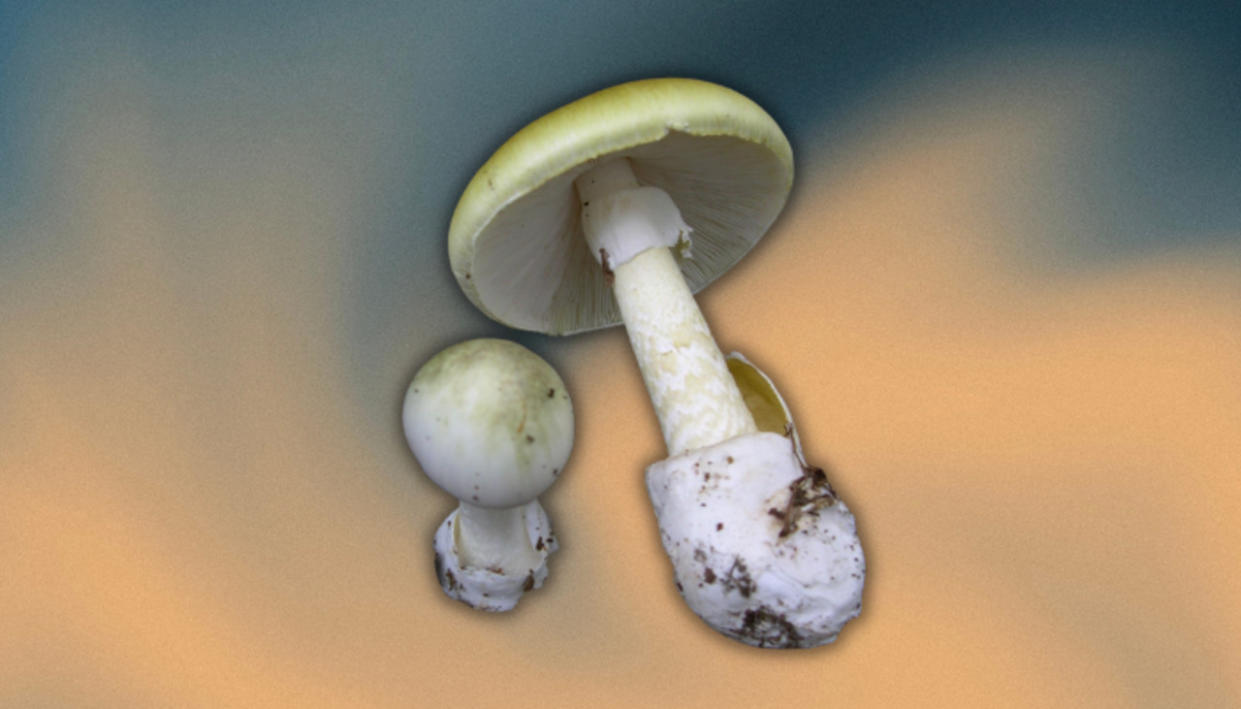World's deadliest mushroom may be adapting to spread faster

Over 90 per cent of global deaths due to ingesting mushrooms come from the 'death cap' - a European species that can also cause kidney and liver damage. Just half of a mushroom contains enough toxins to do serious damage.
The death cap, or Amanita phalloides, is an inconspicuous mushroom that can be shades of light green, bronze, or white. It sits a few centimetres off the ground, usually found near oak, beech, chestnut, birch, filbert, hornbeam, pine, and spruce trees. It has a symbiotic relationship with the trees, depending on the roots for survival.
While not native to North America, the death cap mushroom is present in the U.S. and Canada, likely brought over in the roots of infected imported trees.
Now, a new paper has made a startling discovery about North America's death cap population: it has started reproducing in a new way that may boost its invasive spread.
This could lead to big problems: juvenile death cap mushrooms are sometimes mistaken for edible "puffballs" or Asian paddy straw varieties.
Death cap mushrooms, abundant in #California, can easily be mistaken for other edible mushrooms, growing mainly under coastal live oaks. There are more than 700 cases of mushroom ingestion reported to CPCS each year. https://t.co/ldK39WJrAW pic.twitter.com/YJ8WIG6mQZ
Death cap mushrooms, abundant in CA Poison Control on Twitter: "Death cap mushrooms, abundant in #California, can easily be mistaken for other edible mushrooms, growing mainly under coastal live oaks. There are more than 700 cases of mushroom ingestion reported to CPCS each year. https://t.co/ldK39WJrAW pic.twitter.com/YJ8WIG6mQZ / Twitter", can easily be mistaken for other edible mushrooms, growing mainly under coastal live oaks. There are more than 700 cases of mushroom ingestion reported to CPCS each year. CA Poison Control on Twitter: "Death cap mushrooms, abundant in #California, can easily be mistaken for other edible mushrooms, growing mainly under coastal live oaks. There are more than 700 cases of mushroom ingestion reported to CPCS each year. https://t.co/ldK39WJrAW pic.twitter.com/YJ8WIG6mQZ / Twitter" CA Poison Control on Twitter: "Death cap mushrooms, abundant in #California, can easily be mistaken for other edible mushrooms, growing mainly under coastal live oaks. There are more than 700 cases of mushroom ingestion reported to CPCS each year. https://t.co/ldK39WJrAW pic.twitter.com/YJ8WIG6mQZ / Twitter"
Eating a death cap doesn't usually set off any warning signals, either, Britt Bunyard, publisher and Editor-in-Chief of the mycology journal Fungi, tells The Atlantic.
“Poisonous snakes, reptiles, plants, [and] fish have aposematic coloration that shows off that they are poisonous. Mushrooms don’t. The dangerous ones are all mostly drab or brown, green-brown, and bronze. There’s nothing in the taste that tells you what you are eating is about to kill you.”
Find out what you need to know about death cap mushroom poisoning, and discover how to identify it and what to do if you've been poisoned. https://t.co/j2Mpzwh0oO pic.twitter.com/vBvY7taLbG
Find out what you need to know about death cap mushroom poisoning, and discover how to identify it and what to do if you've been poisoned. WebMD on Twitter: "Find out what you need to know about death cap mushroom poisoning, and discover how to identify it and what to do if you've been poisoned. https://t.co/j2Mpzwh0oO pic.twitter.com/vBvY7taLbG / Twitter" WebMD on Twitter: "Find out what you need to know about death cap mushroom poisoning, and discover how to identify it and what to do if you've been poisoned. https://t.co/j2Mpzwh0oO pic.twitter.com/vBvY7taLbG / Twitter"
Right now, an average of one person a year dies from eating death cap mushrooms in North America, the Atlantic reports.
In 2016, there was an unusually severe death cap poisoning outbreak, affecting 14 people. While all patients recovered, three received liver transplants, and one, a child, suffered permanent neurological impairment.
No partner needed to reproduce
In Europe, death caps reproduce by combining genomes with a partner. Analysis of 86 mushrooms collected in California starting in 1993 and in parts of Europe dating back to 1978 suggest U.S. mushrooms can reproduce using the chromosomes of an individual.
"The diverse reproductive strategies of invasive death caps are likely facilitating its rapid spread, revealing a profound similarity between plant, animal, and fungal invasions," the researchers say.
While other mushroom species can reproduce unisexually, it was not known the death cap had this ability. Experts say it is a rare trait and one not typically observed in mushrooms outside of a lab setting.
This type of reproduction can limit genetic diversity and could be harmful long-term. The authors hypothesize the mushrooms could be using this strategy to spread further to find a mate.
"Some of the offspring of these mushrooms mate, while others do not, and the cycle repeats," the authors write.
While it's not clear if the reproductive adaptation is responsible for the mushroom's quick proliferation in states like California, the findings are worth additional study.
“I think they’re building up a very good case," Jesús Peña, a mycologist at Harvey Mudd College, told Science.
Thumbnail: Image of death cap mushrooms, background edited by Cheryl Santa Maria. (Archenzo/Wikipedia) CC BY-SA 3.0


